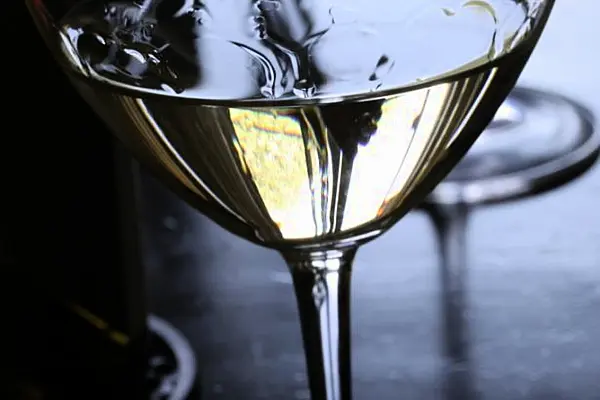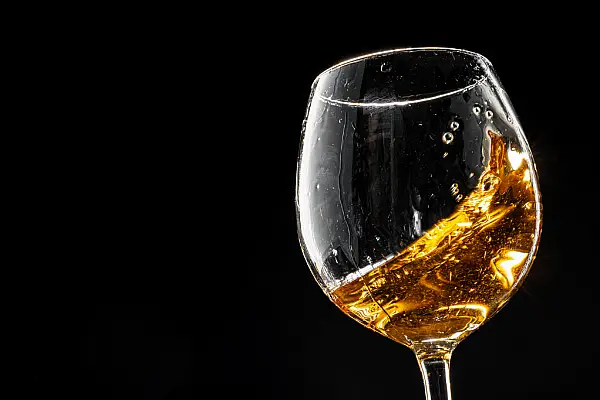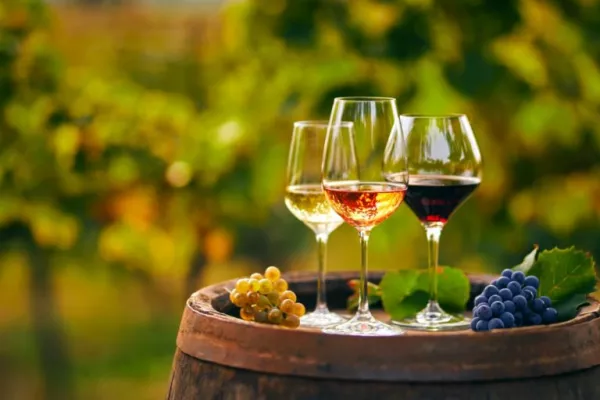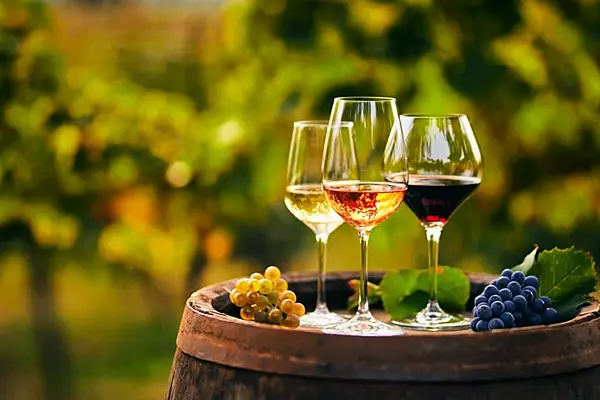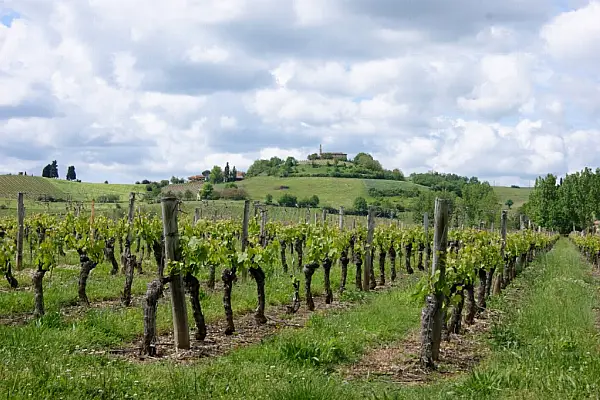Does the idea of ultra-luxe, pricey cava sound like a joke? It’s not to Spanish winemakers.
If you think all Iberian sparkling wines are simple, $10 cheapies to pop open for a budget-brunch drink, it’s way past time for you to recalibrate your wine radar.
There are very good value cavas at $25, but I’m talking about the long-aged examples with elegance and complexity that only recently started making a splash outside of Spain. This spring, much more expensive bottles will arrive in the U.S. and other far-flung countries; giant producer Codorníu, for example, is launching its first Ars Collecta prestige cuvées in the U.S in March. Cost: $125 to $200 a bottle.
Would you fork over Dom Pérignon-level bucks for high-end cava? Passionate wine adventurers clamoring for the latest inside taste thrills will. Are they worth the prices? Yes, for some, but not all. (See my ratings below).
A New Classification
A new top-tier label designation, Cava del Paraje Calificado (single vineyard or single estate cava) may help bring more recognition to the category’s best efforts. Of the millions of bottles of cava produced annually, officials expect only a tiny percentage to qualify.
Here’s the backstory:
For years, the best winemakers complained about cava’s downscale fizz image. There are reasons for that. First of all, two huge companies, Freixenet and Codorníu, dominate the category, and they churn out a lot of inexpensive wine. Second, the definition of cava is pretty loose. Even though the cool Penedès region in Catalonia is cava’s home territory, sparkling wine in places as far-flung as Rioja can also use "cava" on the label.
Wineries could indicate the wine was aged longer with "reserva" and "gran reserva," but until the end of last year, in fact, there were no label terms to identify super premium examples—no grand crus, no prestige cuvée designation, no designated, high-quality subregion as there is, say, for prosecco.
Yet at the same time, top producers have been improving quality by going organic and biodynamic, researching the best sites, doing everything by hand, and creating limited-edition, high-end cuvées from special vineyards.
A Sea Change
Things came to a head a few years ago, when the rebellious owner of first-rate winery Raventós i Blanc declared that cava had such a bad image, he would no longer put the word on his labels. He came up with his own version of an appellation—Conca del Riu Anoia—and set off a cava war. (It’s not an official name, and others can use it if they agree to principles set down by Raventós.)
That helped push the cava council to come up with the new label language that’s just going into effect. The official rules are not as strict as they could be, say winemakers aiming for the highest quality. They do mandate maximum yields and vintage dating, among other things. But only three years of aging are required, and vines can be a mere 10 years old (older vines produce more concentrated wines).
The potential for top wines has always been there, in grapes and winemaking method. Cava is made the same way Champagne is: Winemakers bottle a basic still wine and add a yeast mixture so the wine referments in the bottle, creating bubbles. But since most top producers use one or more local grapes—macabeao, parellada, and xarel-lo, which brings body and structure—the taste and style are different from Champagne, more savory, nutty, and golden, with Mediterranean scents and flavors, even when the wine contains a touch of chardonnay and pinot noir.
Typically these top bottles are labeled Brut Nature or super dry, which means there’s no dose of sugar as there is, for example, for brut. That’s definitely in line with today’s growing fashion for drier sparkling wines.
But what really distinguishes these prestige cavas is their age—the liquid is left as much as 12 years on the leftover yeast (the lees) before release, giving it an intense complexity, with a salty mineral and dried herb character.
“During the Spanish Civil War and World War II, we hid bottles to save them,” says Xavier Gramona, “and discovered how well our wines age. That was a fortunate accident.”
Rating Top Cavas
Be warned. Labels on some of these cuvées resemble those on the winery’s less-expensive wines. Read the fine print carefully. The highest rating is 10.
2007 Gramona III Lustros Brut Nature Gran Reserva ($50 )
Smoky and citrusy, with notes of flowers, herbs, and bitter lemon, this traditional, scented, lightly mineral single vineyard wine is made from xarel-lo and macabeo grapes. 9
2007 Freixenet Casa Sala Brut Nature Gran Reserva ($55 to $60)
The first vintage, 2005, was released at the time of the winery’s 100th birthday in 2014. The latest one is a round, rich blend of 60 percent parellada and 40 percent xarel-lo aged eight years on the lees. It doesn’t have quite as much complexity as some other examples. 7.5
2011 Juve & Camps Gran Juve Brut Gran Reserva ($60)
This intense wine is made in only exceptional vintages. It sports scents of smoke and brioche and flavors that remind me of baked apple with cream. Only 1,800 bottles were produced. 7.5
2008 Raventos i Blanc Manuel Raventos Conca del Riu Anoia ($80 to $100)
El Knockout. A lively, minerally, golden blend of xarel-lo with 15 percent each of macabeo and parellada, it boasts aromas of warm toast, citrus, and honey flavors and a Champagne-like brightness and elegance. It’s a brut nature, and just 3,425 bottles were made. (Also look for extra-aged releases of this cuvée labeled Enoteca.) 9.5
2007 Agusti Torello Mata Kripta Brut Nature Gran Reserva ($80 to $110)
To deal with the unusual amphora-shaped bottle, lean it in an ice bucket. The wine, which uses all three local grapes, is salty and savory and light, yet also broad and complex. 8.5
2005 Recaredo Reserva Particular ($100)
Lemony and mouthwatering, bone dry yet full and creamy, this cuvée has luscious mineral and brioche scents and amazing depth and finesse. It’s a blend of xarel-lo and macabeo from 50-year-old vineyards farmed biodynamically, aged for nearly 10 years, and worth every penny. 10
2009 Codorniu Ars Collecta Finca La Fideuera Gran Reserva Brut ($125)
This giant company has a number of special cuvées with confusing labels. This is one of three single variety, single vineyard micro-cuvées in their Ars Collecta range that will be launched in the U.S. in March (the others are Finca La Pleta, chardonnay, and Finca El Tros Nou, pinot noir). All are very, very smooth and rich, but this light, zingy xarel-lo, with bright savory acidity and plenty of minerality, has the most individuality and was my favorite. 8.5
2003 Recaredo Turo d’en Mota ($160)
Recaredo is a historic cava house in the Alt Penedès zone, and everything is done by hand. This super-serious cuvée was the first single-vineyard cava. This vintage, made from biodynamically grown xarel-lo grapes, is pure and tangy, with a lovely apple and warm bread character. 9
2007 Codorniu Ars Collecta 456 Gran Reserva Brut ($200)
The new top cuvée, with only 1,000 bottles produced, is a blend of xarel-lo, chardonnay, and pinot noir from top plots. The name comes from the number of harvests at Codorníu. It’s polished, creamy, and yeasty and finely made but would be better if it were a brut nature. At this price, you expect, well, more. 8.5
News by Bloomberg, edited by Hospitality Ireland
